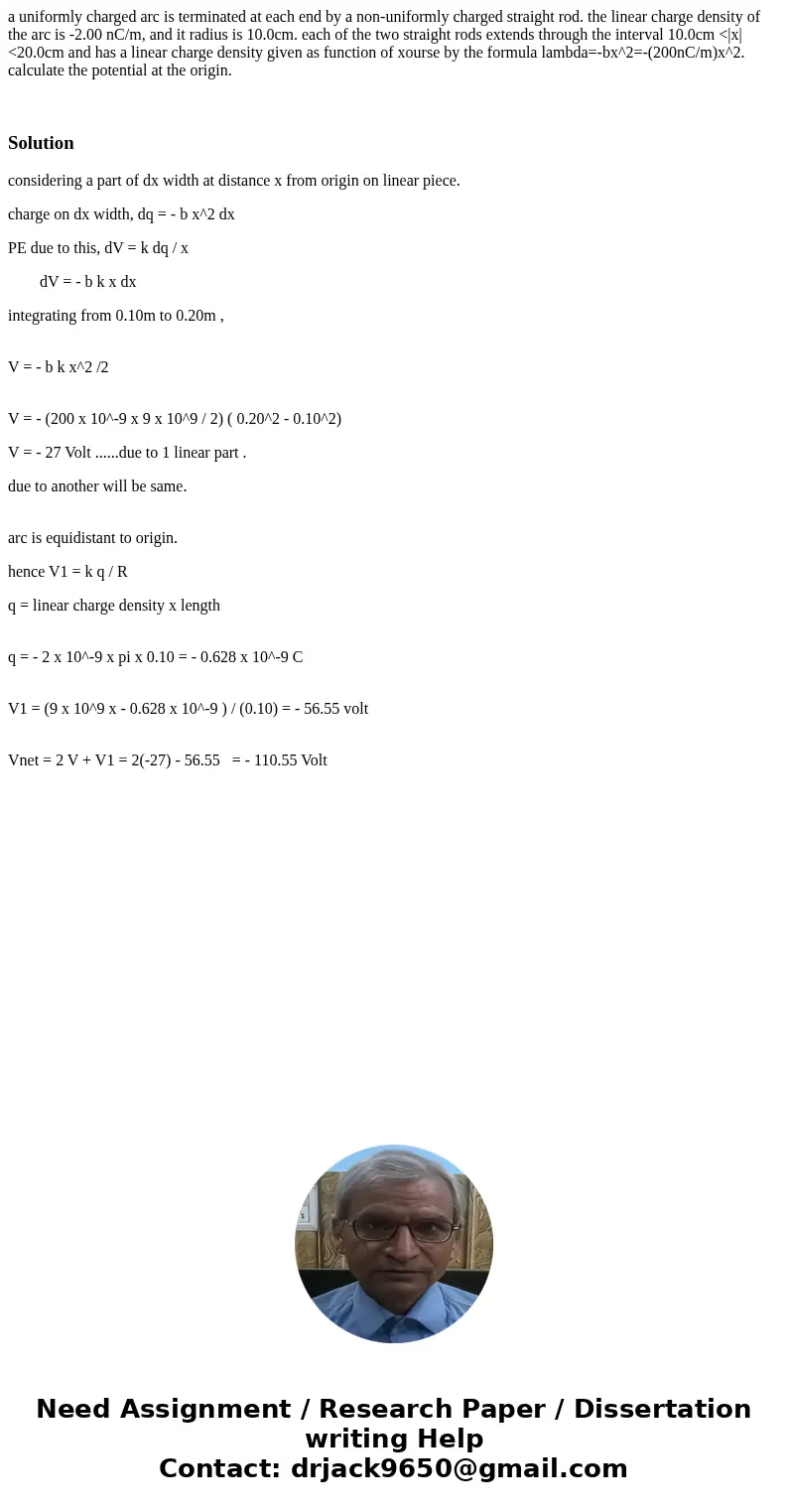a uniformly charged arc is terminated at each end by a nonun
a uniformly charged arc is terminated at each end by a non-uniformly charged straight rod. the linear charge density of the arc is -2.00 nC/m, and it radius is 10.0cm. each of the two straight rods extends through the interval 10.0cm <|x|<20.0cm and has a linear charge density given as function of xourse by the formula lambda=-bx^2=-(200nC/m)x^2. calculate the potential at the origin.
Solution
considering a part of dx width at distance x from origin on linear piece.
charge on dx width, dq = - b x^2 dx
PE due to this, dV = k dq / x
dV = - b k x dx
integrating from 0.10m to 0.20m ,
V = - b k x^2 /2
V = - (200 x 10^-9 x 9 x 10^9 / 2) ( 0.20^2 - 0.10^2)
V = - 27 Volt ......due to 1 linear part .
due to another will be same.
arc is equidistant to origin.
hence V1 = k q / R
q = linear charge density x length
q = - 2 x 10^-9 x pi x 0.10 = - 0.628 x 10^-9 C
V1 = (9 x 10^9 x - 0.628 x 10^-9 ) / (0.10) = - 56.55 volt
Vnet = 2 V + V1 = 2(-27) - 56.55 = - 110.55 Volt

 Homework Sourse
Homework Sourse